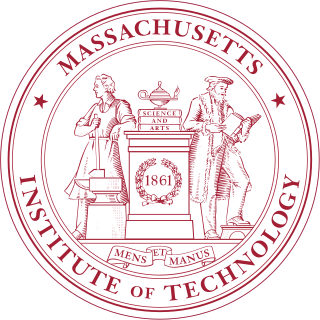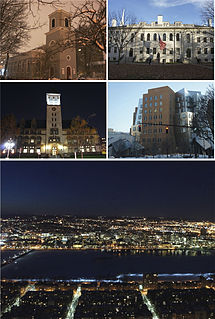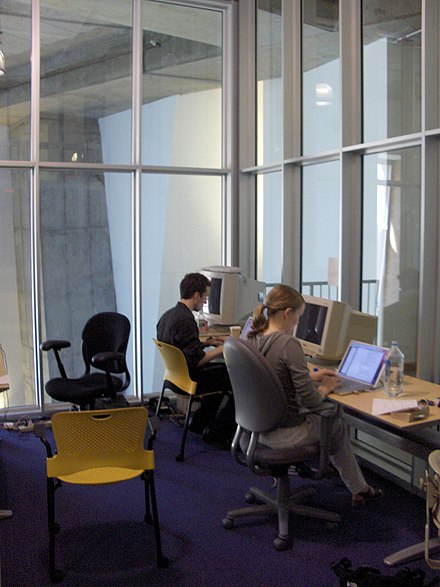Openness is an overarching concept or philosophy that is characterized by an emphasis on transparency and free, unrestricted access to knowledge and information, as well as collaborative or cooperative management and decision-making rather than a central authority. Openness can be said to be the opposite of secrecy.

Cambia is an Australian-based global non-profit social enterprise focusing on open science, biology, innovation system reform and intellectual property. Its projects include the Patent Lens, its successor The Lens, and the Biological Innovation for Open Society Initiative.
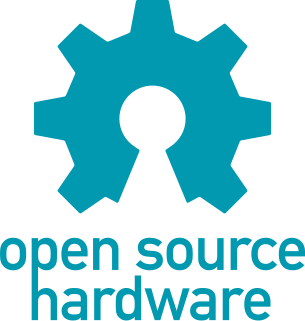
Open-source hardware (OSH) consists of physical artifacts of technology designed and offered by the open-design movement. Both free and open-source software (FOSS) and open-source hardware are created by this open-source culture movement and apply a like concept to a variety of components. It is sometimes, thus, referred to as FOSH. The term usually means that information about the hardware is easily discerned so that others can make it – coupling it closely to the maker movement. Hardware design, in addition to the software that drives the hardware, are all released under free/libre terms. The original sharer gains feedback and potentially improvements on the design from the FOSH community. There is now significant evidence that such sharing can drive a high return on investment for the scientific community.

Open educational resources (OER) are freely accessible, openly licensed text, media, and other digital assets that are useful for teaching, learning, and assessing as well as for research purposes. There is no universal usage of open file formats in OER.
A collaboratory, as defined by William Wulf in 1989, is a “center without walls, in which the nation’s researchers can perform their research without regard to physical location, interacting with colleagues, accessing instrumentation, sharing data and computational resources, [and] accessing information in digital libraries”.
BiOS is an international initiative to foster innovation and freedom to operate in the biological sciences. BiOS was officially launched on 10 February 2005 by Cambia, an independent, international non-profit organization dedicated to democratizing innovation. Its intention is to initiate new norms and practices for creating tools for biological innovation, using binding covenants to protect and preserve their usefulness, while allowing diverse business models for the application of these tools.

Open research is research conducted in the spirit of free and open-source software. Much like open-source schemes that are built around a source code that is made public, the central theme of open research is to make clear accounts of the methodology freely available via the internet, along with any data or results extracted or derived from them. This permits a massively distributed collaboration, and one in which anyone may participate at any level of the project.
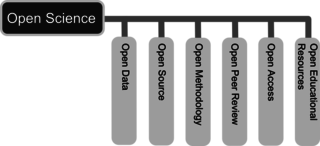
Open science is the movement to make scientific research and its dissemination accessible to all levels of an inquiring society, amateur or professional. Open science is transparent and accessible knowledge that is shared and developed through collaborative networks. It encompasses practices such as publishing open research, campaigning for open access, encouraging scientists to practice open notebook science, and generally making it easier to publish and communicate scientific knowledge.
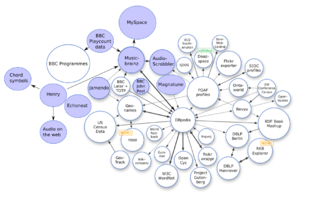
Open data is the idea that some data should be freely available to everyone to use and republish as they wish, without restrictions from copyright, patents or other mechanisms of control. The goals of the open-source data movement are similar to those of other "open(-source)" movements such as open-source software, hardware, open content, open education, open educational resources, open government, open knowledge, open access, open science, and the open web. Paradoxically, the growth of the open data movement is paralleled by a rise in intellectual property rights. The philosophy behind open data has been long established, but the term "open data" itself is recent, gaining popularity with the rise of the Internet and World Wide Web and, especially, with the launch of open-data government initiatives such as Data.gov, Data.gov.uk and Data.gov.in.
Patentleft is the practice of licensing patents for royalty-free use, on the condition that adopters license related improvements they develop under the same terms. Copyleft-style licensors seek "continuous growth of a universally accessible technology commons" from which they, and others, will benefit.

Free content, libre content, or free information, is any kind of functional work, work of art, or other creative content that meets the definition of a free cultural work.

John Wilbanks is the chief commons officer at Sage Bionetworks and a senior fellow at the Ewing Marion Kauffman Foundation and at FasterCures. He runs the Consent to Research Project.
Open science data is a type of open data focused on publishing observations and results of scientific activities available for anyone to analyze and reuse. A major purpose of the drive for open data is to allow the verification of scientific claims, by allowing others to look at the reprodubility of results, and to allow data from many sources to be integrated to give new knowledge. While the idea of open science data has been actively promoted since the 1950s, the rise of the Internet has significantly lowered the cost and time required to publish or obtain data.
A copyright transfer agreement is a legal document containing provisions for the conveyance of full or partial copyright from the rights owner to another party. It is similar to contracts signed between authors and publishers but does not normally involve the payment of remuneration or royalties. Such agreements are a key element of subscription-based academic publishing, and have been said to facilitate the handling of copyright-based permissions in print-only publishing. In the age of electronic communication, the benefits of copyright transfer agreements have been questioned, and while they remain the norm, open licenses as used in open access publishing have been established as an alternative.

The German National Library of Science and Technology, abbreviated TIB, is the national library of the Federal Republic of Germany for all fields of engineering, technology, and the natural sciences. It is jointly funded by the Federal Ministry of Education and Research (BMBF) and the 16 German states. Founded in 1959, the library operates in conjunction with the Leibniz Universität Hannover. In addition to acquiring scientific literature, it also conducts applied research in such areas as the archiving of non-textual materials, data visualization and the future Internet. The library is also involved in a number of open access initiatives. With a collection of over 9 million items in 2017, the TIB is the largest science and technology library in the world.

OER Commons is a freely accessible online library that allows teachers and others to search and discover open educational resources (OER) and other freely available instructional materials.
Addgene is a non-profit plasmid repository. Addgene facilitates the exchange of genetic material between laboratories by offering plasmids and their associated cloning data to not-for-profit laboratories around the world. Addgene provides a free online database of plasmid cloning information and references, including lists of commonly used vector backbones, popular lentiviral plasmids and molecular cloning protocols.

The Panton Principles are a set of principles which were written to promote open science. They were first drafted in July 2009 at the Panton Arms pub in Cambridge.
Open educational resources in Canada are the various initiatives related to open educational resources (OER) and open education established nationally and provincially in Canada, and with international collaboration.


